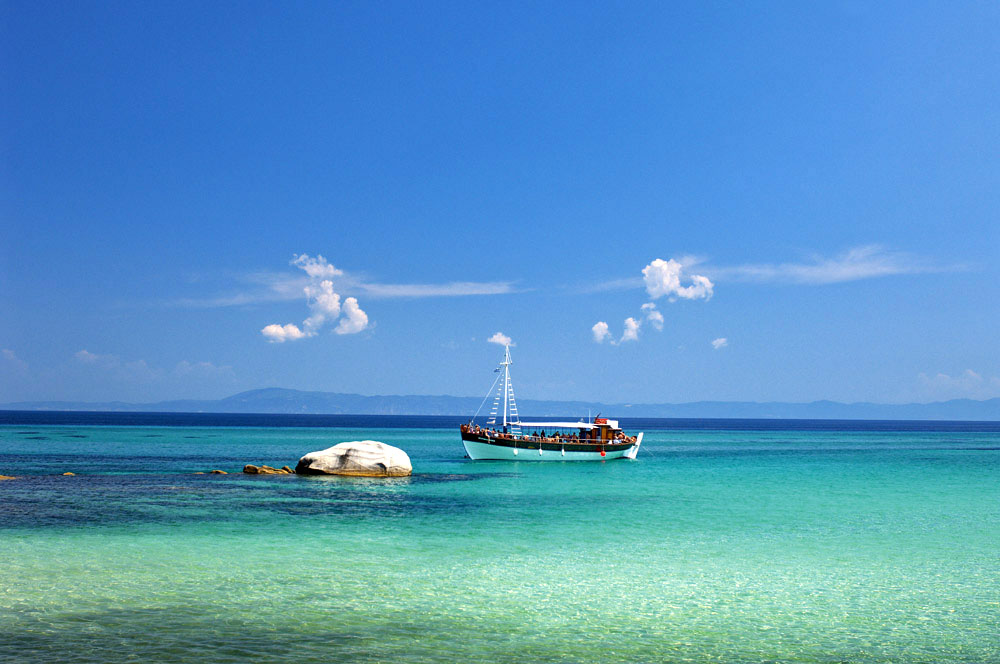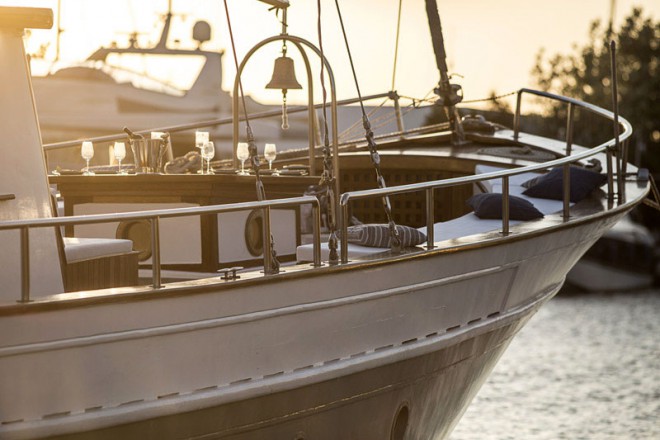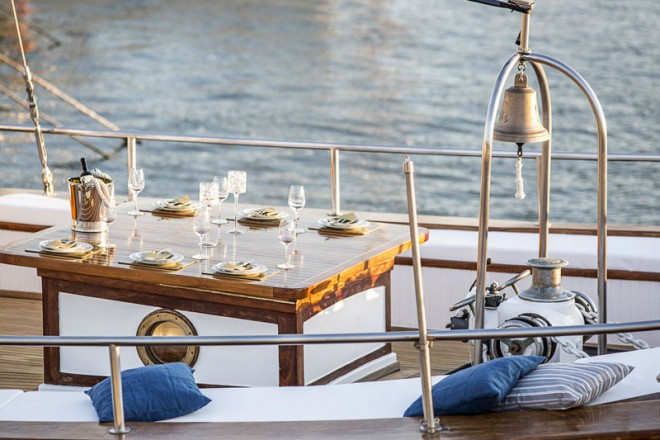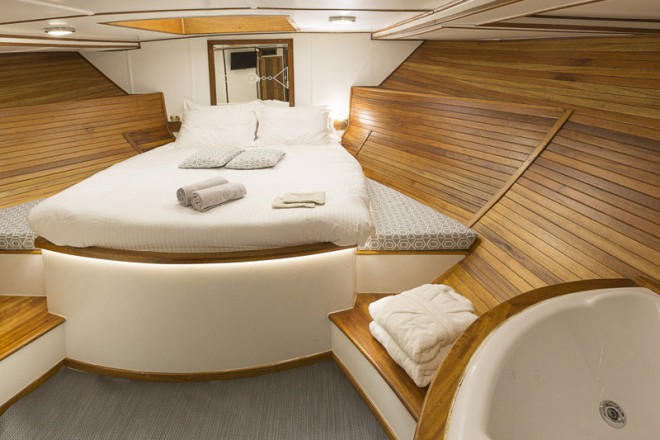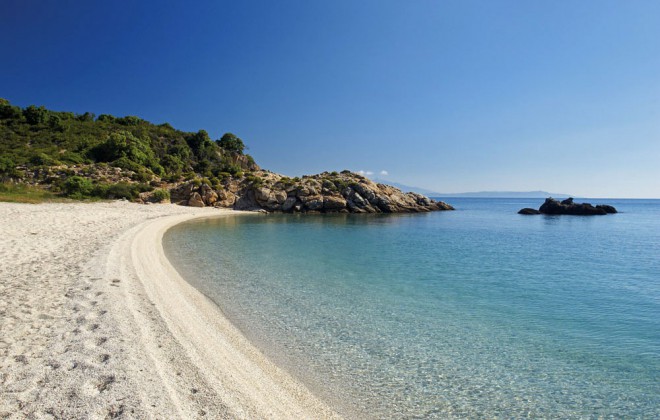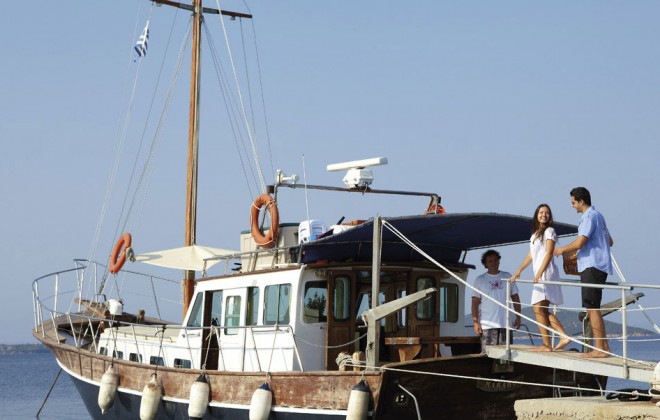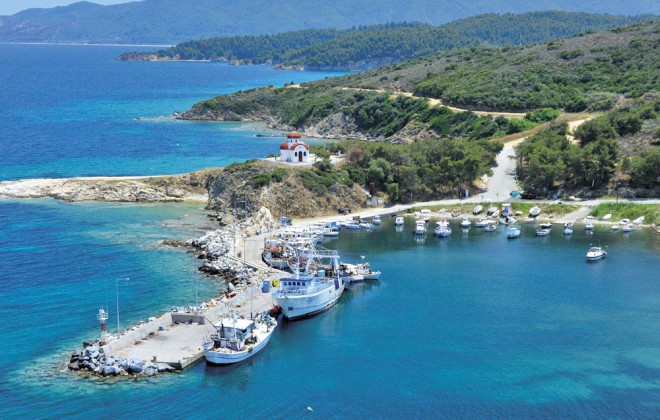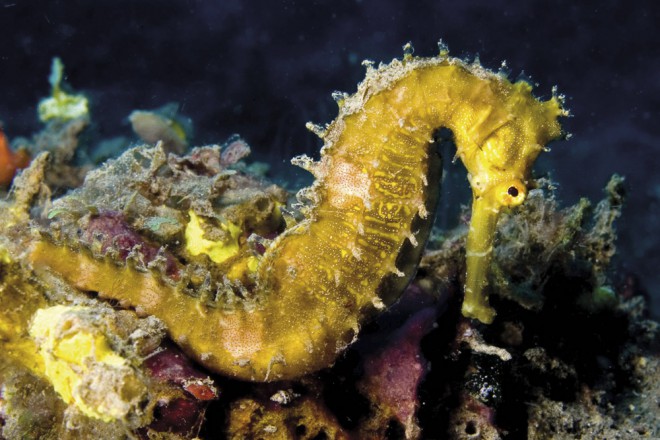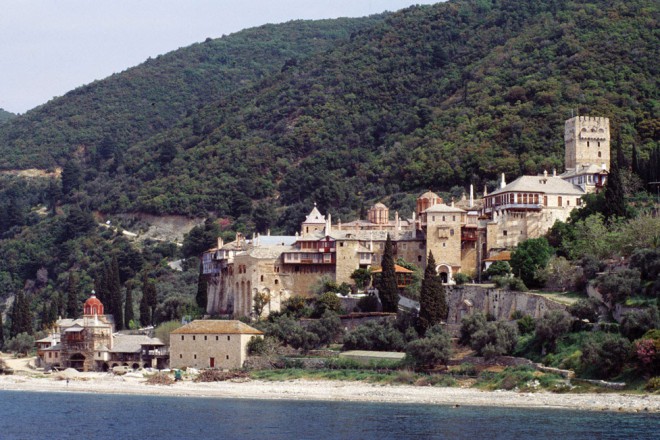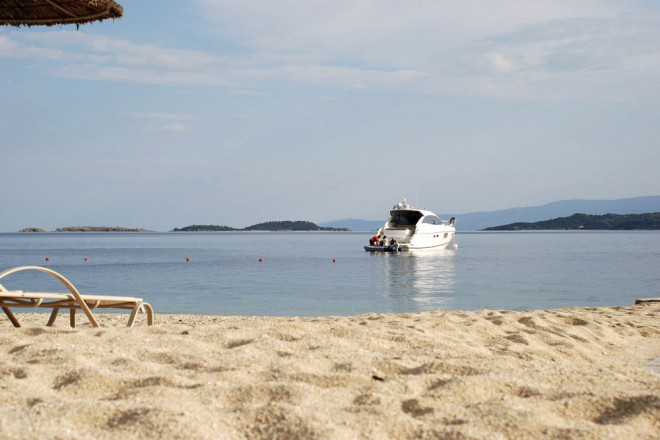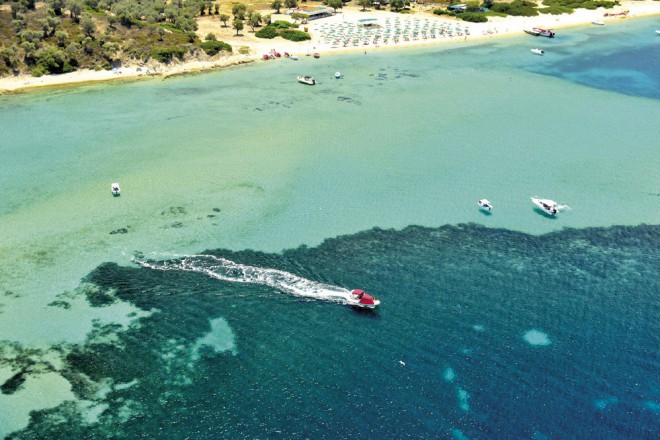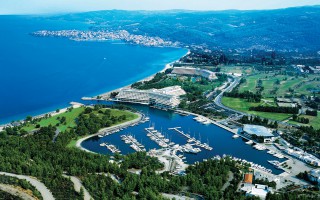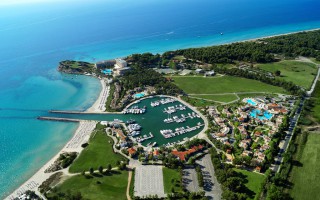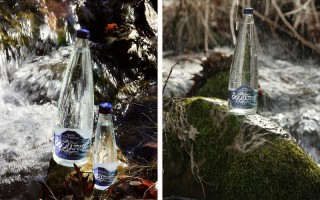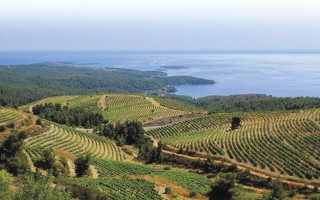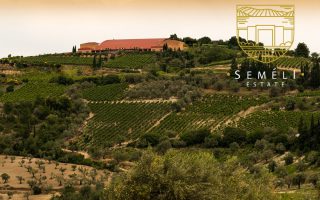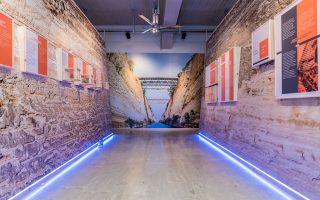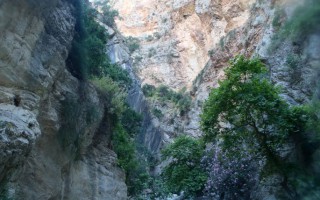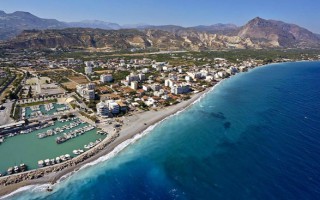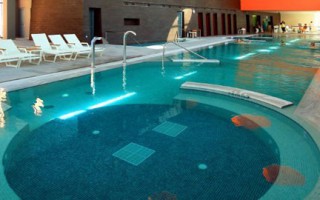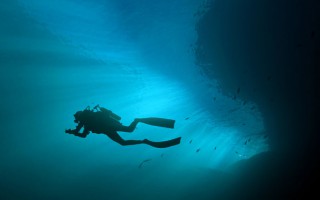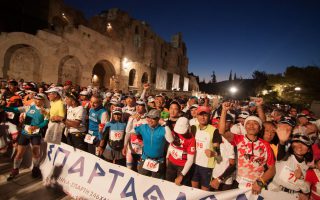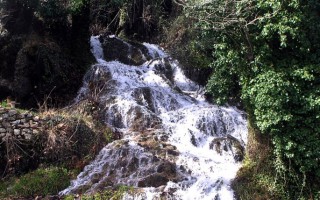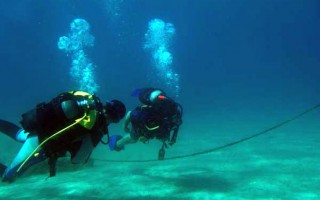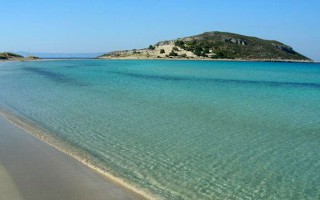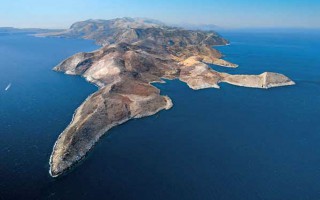The Mount Athos Area (eastern Halkidiki) is a charismatic place.
With 300 whole kilometres of coastline, more than 100 white / sandy beaches, 61 of them classified as premium beaches, 17 blue flags, 7 traditional fishing ports and 3 bays, it is the Mediterranean destination par excellence, ideal (among others) for lovers of sailing and yachting.
What sea proposals does it offer?
Excellent sea routes in the gulf of Mount Athos, around sandy Ammouliani and Mount Athos and from there to Acanthios Bay with its blue beaches and, finally, to the Strymonikos Bay, around the historic hills of ancient Stagira and the enchanting mussel farms of Olympiada!
Sailing
Sailing around Mount Athos is like a “paradise fairytale”! Athonite monasteries, islets, islands, crystal see water, “blue lagoon” areas, dolphins, traditional fishing harbors, green landscapes, fresh sea food, various and authentic human activities….
Live it!
Feel it!
and fill with the Mediterranean aura!
With its magical coasts and particular shape like Poseidon’s trident stretching into the sea, Halkidiki is a holiday destination unlike any other. Ideal for families or friends who want to explore the breathtaking landscape of Mount Athos, visit luxurious resorts and swim in azure waters.
Read more about the tours on the website of Mount Athos Area Organization
Swimming, Diving, Fishing, Exploring
Explore, swim, cruise, fish, and dive!
Yes, you can enjoy the all!
ITINERARIES
Ammouliani-Vourvourou Islands Round Tour
Beach to Beach daily cruises
Departure from Ouranoupolis port
Exploration of the Ouranoupolis reef, refuge to various fish species and a spectacular route rich in underwater flora.
Pass by the most beautiful beaches of Ammouliani island (Drenia islets) and Vourvourou (Diaporos islet)
Stop for a swim and exploration of the sea floor (snorkeling)
Barbeque and Greek music on the return leg of the trip
Sunset cruising/ Night Parties
Breathtaking sunset on Board
Let yourselves bask in the sunset of Ouranoupolis on board with the majestic view of Mt. Athos in the background while you enjoy an afternoon cocktail listening to chill out music.
Tour the gorgeous Drenia islets of Ammouliani, take a picture of yourselves in front of the Ouranoupolis Byzantine Tower.
As the sun vanishes in the sea, the deck lights go down, the underwater lighting switches on, music gets louder and the party has just began.
Do it Yourself
Personal Destination Selection
Personal choice of music, food and drinks
Bachelor/Birthday/Private Parties
Fishing Trips
Special Events
Conference Meetings with catering and multimedia support
Read more about the tours on the website of Mount Athos Area Organization
Dive and discover the hippocampus colony
Enjoy a unique diving experience, exploring the seahorse colony in the magical beach of Stratoni, where the lush Aristotelian Mountain meets the blue of the Aegean Sea!
An experience as unique as the seahorses you will see.
These are unique in terms of appearance and sexual preferences, in their reproduction method and certainly very interesting…
When seahorses flirt, they hide and when in unusual environmental conditions, they change colour.
You will find dozens gathered there, on the beach of Stratoni. You can see them standing up in the sand, as if in a meeting. They gather at depths of 8-12 metres, avoiding shallower waters. You will see them on the golden sea bottom, with fine solid sand and rich underwater flora. Some stand motionless in the sand, letting themselves be drawn by any currents that could help their slow motion even a little. Others cling to clusters of mussels scattered in the area, using their convoluted tail.
A few words about Seahorses (Equus Marinus)
Seahorses belong to the Syngnathiformes order of the Syngnathidae family, in the class of actinopterygii, despite all past unfortunate taxonomic classifications that defined them as amphibians or even insects! Related species include the leafy seadragon (Phycodurus eques) and pipefish. Their size ranges from 16 mm (Hippocampus denise) up to 35 cm. The distribution of the upper part of their body, which somewhat resembles that of a horse, explains the second part of their name (horse) and thus they are widely known as seahorses. In Greek, they are known as Hippocampi [hippos (=horse) + campi]. The second part of their name refers to the mythological monster Campi, a female black, winged monster, which Saturn had placed in the Underworld to guard the Cyclopes and Hecatonchires.
Habits
Seahorses swim upright, a feature they do not share their close relatives, the pipefish, which swim in a horizontal position. They push their bodies forward with fast vibrations of their dorsal fin (35 per second), and steer it with small pectoral fins, located behind their eyes. They rise or sink by varying the volume of gas in their swim bladders. They usually live in shallow waters, except for the winter months, when they find shelter in rocks at greater depths of up to 30 metres. Their morphology means that they are poor, very slow swimmers and thus they spend the greater part of their day clinging to algae, Posidonia or corals, in protected areas. Some also find shelter in brackish and fresh waters, although freshwater seahorses do not exist. They are always camouflaged well and can instantly change colour and immediately become lost from the sight of their predator, usually big fish, turtles or seabirds.
Feeding
Seahorses do not have a jaw and consequently teeth. Their stomach is primitive; therefore they have developed a special mechanism for the uptake of food. At the base of their snout, there is an organ like a trigger that contracts abruptly and so food is sucked in due to negative pressure. Their eyes, which move independently, covering a wider field of view, also help them in finding food. They eat small crustaceans, plankton, sea lice and in general anything small enough to fit in their snout.
Read more about the tours on the website of Mount Athos Area Organization
Source: Mount Athos Area Organization
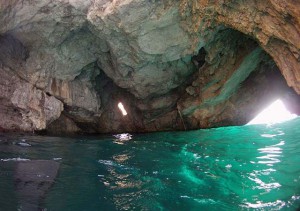 There are many diving schools in Corinthia for those interested in exploring its underwater world. Diving is allowed in the region, except in some specific archaeological sites and sea parks. Fishing with scuba diving equipment is not allowed, including spear guns with oxygen bottles, taking photos or removing antiquities. You can get more information at the local port police stations.Most diving spots in the prefecture of Corinthia are located in the limits of the municipality of Loutraki- Agioi Theodoroi.
There are many diving schools in Corinthia for those interested in exploring its underwater world. Diving is allowed in the region, except in some specific archaeological sites and sea parks. Fishing with scuba diving equipment is not allowed, including spear guns with oxygen bottles, taking photos or removing antiquities. You can get more information at the local port police stations.Most diving spots in the prefecture of Corinthia are located in the limits of the municipality of Loutraki- Agioi Theodoroi.
Pappas«Andros» wreck
Diving Type: Wreck Dive, Deep Dive
Maximum depth: 28 m
Water Temperature: The water temperature is between 22° and 26° C.
Visibility under water: Visibility varies between 10 and 30 meters.
When to go: June-August
This dive site is located opposite the Hotel Pappas. Access by boat is easy and the dive begins at a depth of 6-7 meters. This site has a great morphological interest because of the sloping reef, which starts at 10-12 meters and reaches 25 meters. Here you can find many holes. At the end of the rocky bottom, there is a large cave with an entrance at 25 meters of depth whose interior is another 10 meters deep. Divers that decide to enter must be very experienced and careful because of the muddy environment.
Diving Types: Deep Diving
Maximum depth: 25 m
Water Temperature: The water temperature is between 22° and 26° C.
Visibility under water: Visibility varies between 10 and 30 meters.
When to go: June-August
Atlas
A very interesting reef begins in front of the apartment building Atlas. The dive starts at a shallow depth with a rocky bottom covered by algae and continues with a wall that begins at 10 meters and ends at a 25 meter deep. Yellow, red and blue sponges compose a beautiful landscape.
Diving Types: Deep Diving
Maximum depth: 28 m
Water Temperature: The water temperature is between 22° and 26° C.
Visibility under water: Visibility varies between 10 and 30 meters.
When to go: June-August
Poseidon 1
The dive starts from a small beach or from the dock at 4-5 meters of depth. It is a habitat for large groups of sea breams and up to about 18 meters there are black tail combers nests.
Diving Types: Deep Diving Training
Maximum depth: 20 m
Water Temperature: The water temperature is between 22° and 26° C.
Visibility under water: Visibility varies between 10 and 30 meters.
When to go: June-August
Poseidon 2
This site is a very good and beautiful yet difficult dive. A huge reef lies at about 100 meters from the coast of Hotel Poseidon Resort. The dive starts from a pontoon, and using a compass to find the start of the reef, or from a boat with a straight fall to 30-35 meters deep. The site is covered with red soft corals and has a rich underground flora and fauna.
Diving Types: Deep Diving
Maximum depth: 48 m
Water Temperature: The water temperature is between 22° and 26° C.
Visibility under water: Visibility varies between 10 and 30 meters.
When to go: June-August
Grill
The reef begins at 20 meters and ends at 35 meters of depth. The dive starts from the beach or from a boat (6-7 meters deep) and continues towards the open sea until the shallowest area of the reef. The site is covered with soft corals and hosts large octopuses.
Diving Types: Deep Diving
Maximum depth: 35 m
Water Temperature: The water temperature is between 22° and 26° C.
Visibility under water: Visibility varies between 10 and 30 meters.
When to go: June-August
Orphanage
Starting at 7 meters of depth, the dive continues towards the open sea passing by an 18m rock wall. Along the coastline, there are rocks of unusual shapes, covered with corals of bright colors, sponges and marine flora. It is a very interesting dive site with unexpected surprises.
Diving Types: Sightseeing Deep Diving
Maximum depth: 35 m
Water Temperature: The water temperature is between 22° and 26° C.
Visibility under water: Visibility varies between 10 and 30 meters.
When to go: June-August
Chapel
In front of a small traditional Orthodox church, the dive starts at a depth of 8 meters, following a semi-circular route. A vertical wall begins at 20 meters and ends at 30 meters of depth. The site is covered by very soft red corals and hosts many nests. During the summer, sea turtles visit the area.
Diving Types: Sightseeing Deep Diving
Maximum depth: 35 m
Water Temperature: The water temperature is between 22° and 26° C.
Visibility under water: Visibility varies between 10 and 30 meters.
When to go: June-August.
Skala
One of the best dive sites in the area of Loutraki. In the midst of a sandy bottom, there is a reef full of aquatic life. The dive begins at a depth of 4-5 meters close to the coast. A wall with many holes and cracks filled with fish can be found at a depth of 25 meters.
Diving Types: Deep Diving
Maximum depth: 32 m
Water Temperature: The water temperature is between 22° and 26° C.
Visibility under water: Visibility varies between 10 and 30 meters.
When to go: June-August
Villa
Starting at 3-4 meters deep, there is a sandy bottom with a gentle slope. Huge rocks, with unusual forms, can be seen all around, up to 19 meters of depth. It is a great dive that offers many surprises.
Diving Types: Deep Diving
Maximum depth: 48 m
Water Temperature: The water temperature is between 22° and 26° C.
Visibility under water: Visibility varies between 10 and 30 meters.
When to go: June- August
Vouliagmeni Lake
On the right hand side of the Lake Vouliagmeni entrance, this dive site starts at 10 meters depth and extends to a steep sloping reef. The site is not very interesting in terms of marine life, but it has important historical interest. At least 15 anchors of all types, attest the past existence of a port for large or small boats.
Diving Types: Wreck Dive Deep Diving
Maximum depth: 45 m
Water Temperature: The water temperature is between 22° and 26° C.
Visibility under water: Visibility varies between 10 and 30 meters.
When to go: June- August
Plevra 1
After entering the lake, an unusual wall begins forming two diving spots. A few meters further at the ancient port of Heraion, the site is covered by huge rocks.
Diving Types: Deep Diving
Maximum depth: 40 m
Water Temperature: The water temperature is between 22° and 26° C.
Visibility under water: Visibility varies between 10 and 30 meters.
When to go: June-August
Plevra 2
A small bay lies by the path of the ancient port of Heraion, along the coastline. The dive begins at 10 meters and continues to multiple platforms with steep slopes that reach a depth of 60 meters. At 40 meters of depth, yellow and green gorgonians can be seen everywhere. The site contains ancient amphorae and pieces of ancient pottery.
Diving Types: Wreck Dive Deep Diving
Maximum depth: 110 m
Water Temperature: The water temperature is between 22° and 26° C.
Visibility under water: Visibility varies between 10 and 30 meters.
When to go: June-August
Heraion
The dive begins at the entrance of the ancient port of Heraion. The depth here seems to be very deep because it’s the reef that has a very steep slope. A huge yellow gorgonian can be found at a depth of 25 meters.
Diving Types: Deep Diving
Maximum depth: 60 m
Water Temperature: The water temperature is between 22° and 26° C.
Visibility under water: Visibility varies between 10 and 30 meters.
When to go: June- August
Cavos
It is a dive site for very experienced divers. The first platform can be found at a depth of 12 meters. A little deeper, at a depth of 55 meters, there is a small platform that reaches 120 meters of depth. A second platform full of fish can be found here. For those who do deep dive at a depth of 45-50 meters, there is a unique forest of gorgonians in a variety of sizes and colors.
Diving Types: Sightseeing Deep Diving
Maximum depth: 120 m
Water Temperature: The water temperature is between 22° and 26° C.
Visibility under water: Visibility varies between 10 and 30 meters.
When to go: June- August
Lighthouse
Diving Types: Deep Diving
Maximum depth: 35 m
Water Temperature: The water temperature is between 22° and 26° C.
Visibility under water: Visibility varies between 10 and 30 meters.
When to go: June-August
Limenarchis 1
The dive begins in a shallow area and continues deeper. The morphology and colour formulation is very interesting. A 70 cubic meters platform lies at the seashore covered with all kinds of underwater flora that produce several reflections with the sunlight. The visibility is 25-30 meters. In the deeper part of this site, there is a platform with huge rocks.
Diving Types: Deep Diving
Maximum depth: 18 m
Water Temperature: The water temperature is between 22° and 26° C.
Visibility under water: Visibility varies between 20 and 30 meters.
When to go: June-August
Limenarchis 2
Around this reef, there is a great platform, 2 to 15 meters depth. Covered with colorful corals, it is the ideal site for multilevel dives. At a depth of 20 meters lies the first cave. The cave is decorated with amazing bright colors produced by the reflections of the sun. Corals, sponges, groupers and lobsters, dominate the cave producing an amazing feast of colors. On the right side there is a concavity formed in the wall. Here lies the entrance to the second cave. The cave entrance is large enough to receive four divers.
Diving Types: Cave Dive Deep Diving
Maximum depth: 90 m
Water Temperature: The water temperature is between 22° and 26° C.
Visibility under water: Visibility varies between 10 and 30 meters.
When to go: June-August
Limenarchis Reef
Diving Types: Deep Diving
Maximum depth: 70 m
Water Temperature: The water temperature is between 22° and 26° C.
Visibility under water: Visibility varies between 10 and 30 meters.
When to go: June-August
Deep Blue Canyon
At 4 meters in depth, the setting is characterized by crystal clear water and white sand and rocks. As we swim deeper, there is a canyon with sand in the middle and two huge rough walls on its two lateral sides. Visibility can reach 30 meters. It is considered to be a difficult dive because of the large depth and the existence of strong currents.
Diving Types: Sightseeing Deep Diving
Maximum depth: 94 m
Water Temperature: The water temperature is between 22° and 26° C.
Visibility under water: Visibility varies between 10 and 30 meters.
When to go: June-August
Deep Blue
Diving Types: Deep Diving
Maximum depth: 230 m
Water Temperature: The water temperature is between 22° and 26° C.
Visibility under water: Visibility varies between 10 and 30 meters.
When to go: June-August
Mushroom
On the coast, there is a rock in the shape of a mushroom. The dive starts at 4 meters of depth, in a rocky bottom full of cracks and holes. It is an easy dive with nice aquatic life.
Diving Types: Deep Diving
Maximum depth: 20 m
Water Temperature: The water temperature is between 22° and 26° C.
Visibility under water: Visibility varies between 10 and 30 meters.
When to go: June-August
Sterna 1
The dive begins at a depth of 3-4 meters deep, in crystal clear waters. It is a beautiful yet wild site. The shallow part of the dive is formed by rocks full of cavities and gold sand. Deeper, at 20 meters of depth, there are huge rocks and among them large groupers. At 30-40 meters of depth, all these rocks are densely covered by corals and algae. At the end of the dive, the divers have to go through a canyon with a very interesting geological morphology.
Diving Types: Deep Diving
Maximum depth: 90 m
Water Temperature: The water temperature is between 22° and 26° C.
Visibility under water: Visibility varies between 10 and 30 meters.
When to go: June-August
Sterna 2
It is a very interesting dive site, with an average depth of 6 meters and a maximum depth of 15 meters. There are two small caves. At a depth of 3 meters there is a small cave ideal for divers of all ages due its relatively small depth. The site offers relaxing diving tours.
Diving Types: Cave Dive
Maximum depth: 12 m
Water Temperature: The water temperature is between 22° and 26° C.
Visibility under water: Visibility varies between 10 and 30 meters.
When to go: June-August
Mylokopi
Diving Types: Deep Diving
Maximum depth: 22 m
Water Temperature: The water temperature is between 22° and 26° C.
Visibility under water: Visibility varies between 10 and 30 meters.
When to go: June-August
Source: www.mythicalpeloponnese.gr
 The crystal clear waters of the Laconian Sea with its rich sea bed offer scuba divers great diving trips. Explore the diverse underwater flora in most of the beaches of the area. In the Laconia region autonomous diving is permitted at the Gulf of Epidaurus Limera that extends from Monemvasia and contains the shores of Myrtoo.
The crystal clear waters of the Laconian Sea with its rich sea bed offer scuba divers great diving trips. Explore the diverse underwater flora in most of the beaches of the area. In the Laconia region autonomous diving is permitted at the Gulf of Epidaurus Limera that extends from Monemvasia and contains the shores of Myrtoo.
In the Laconian gulf free diving is permitted south of cape Psifia, from Trinesa to Kokkinia at the region of Gytheio, in Elos and Skala.
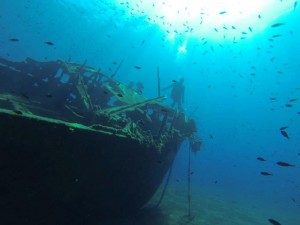 The prehistoric settlement of Pavlopetri lays in its submerged nest at Pounta beach, along with the ancient city of Plytra, at the beach of the town bearing the same name. Because of the historic nature of these two archaeological sites, only snorkeling is permitted in the area. In Elia and at the cape Ksuli there are chasms and underwater caves.
The prehistoric settlement of Pavlopetri lays in its submerged nest at Pounta beach, along with the ancient city of Plytra, at the beach of the town bearing the same name. Because of the historic nature of these two archaeological sites, only snorkeling is permitted in the area. In Elia and at the cape Ksuli there are chasms and underwater caves.
There are numerous diving schools in the region of Laconia. The diving tours are permitted from the sunrise to the sunset. Spear gun fishing with scuba diving equipment is not allowed. You can find more information at the local port police.
Source: www.mythicalpeloponnese.gr

